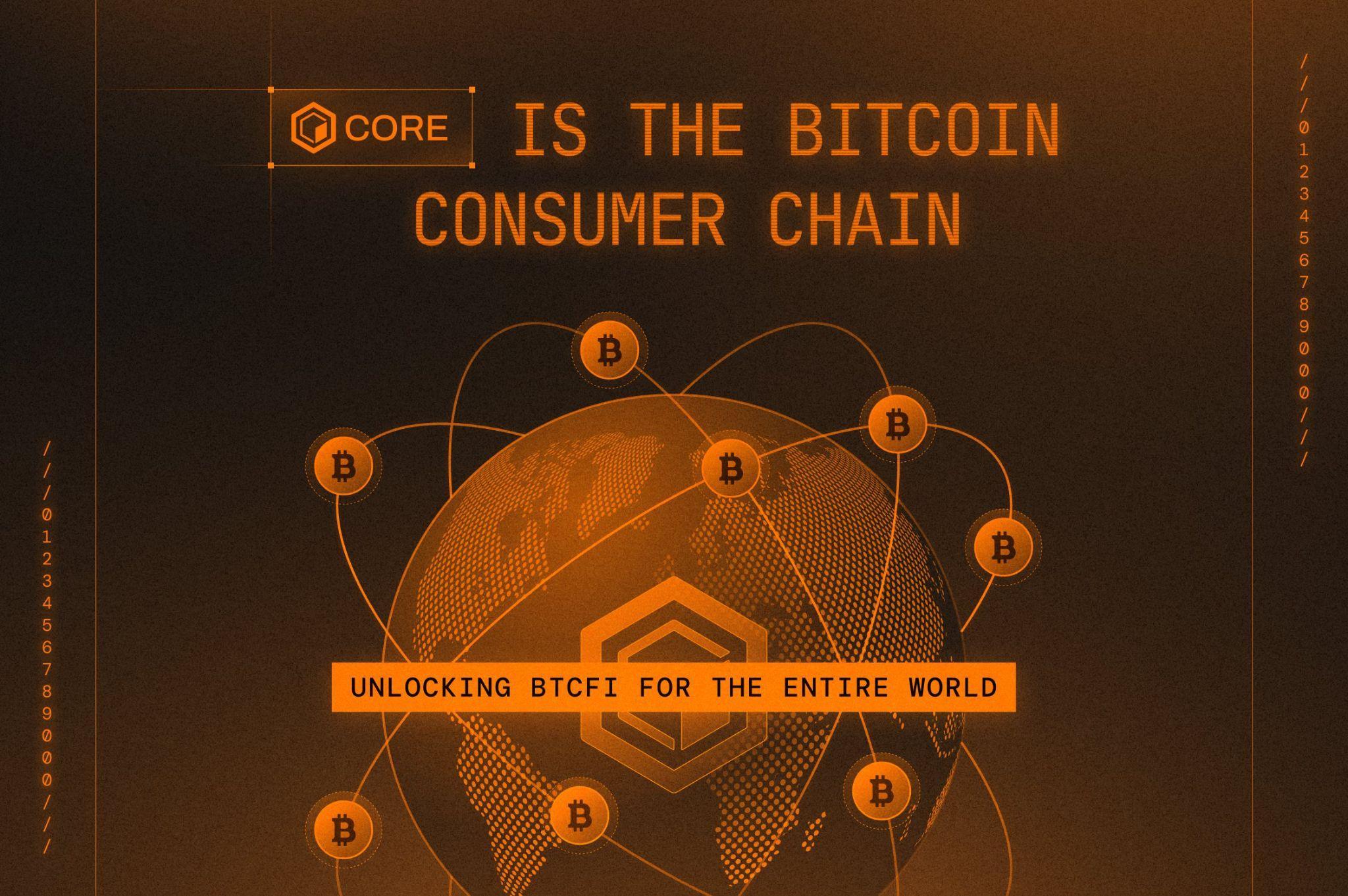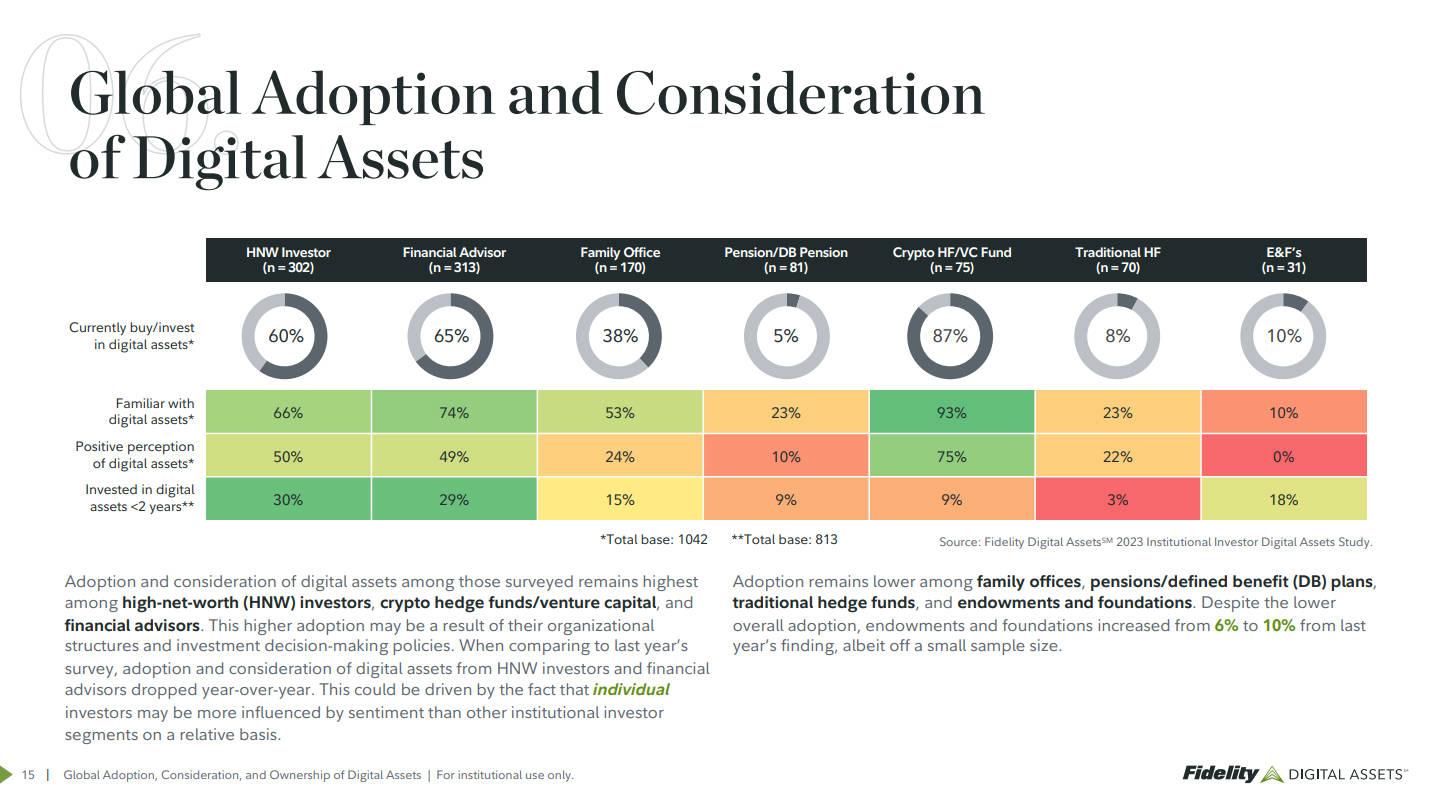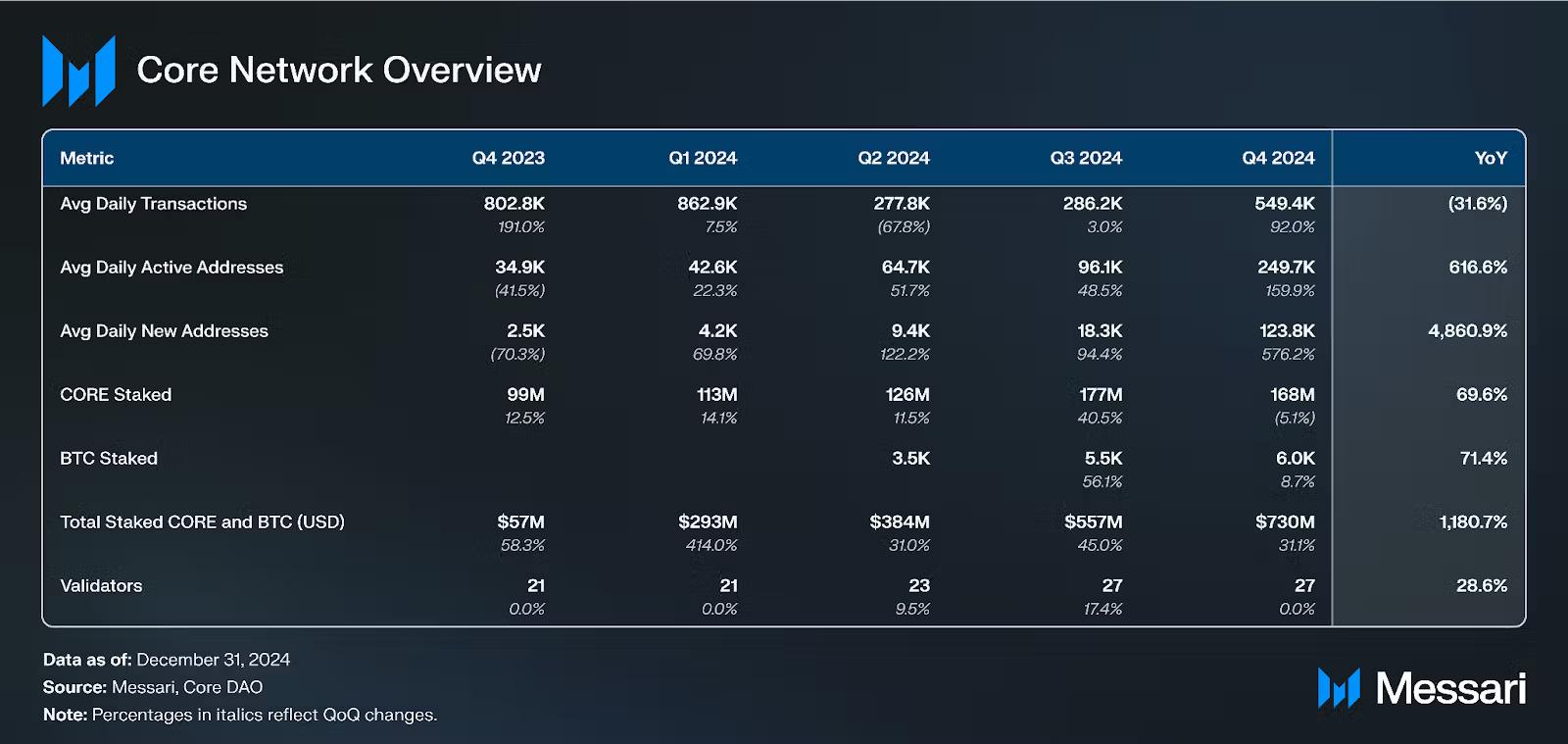New trends in the development of Bitcoin ecosystem: Transforming from investment institutionalization to consumer chains, how can Core promote BTCFi?

Reprinted from panewslab
02/20/2025·3M
Author: Weilin, PANews
In the current cycle, the adoption of Bitcoin by institutions has become a highly-watched trend. A Fidelity survey shows that there is a large amount of untapped demand for Bitcoin adoption. Under the influence of the approval of US Bitcoin ETFs and the shift in regulatory policies, governments and large funds have begun to regard Bitcoin as a strategic reserve asset. The United States has the potential to establish a strategic Bitcoin reserve, and more countries and institutions may follow it, which may lead to a new financial paradigm, and institutions adopting Bitcoin is at a critical turning point.
Core introduces dual staking through Fusion upgrade, and combines its revenue-based ETP, CoreFi strategies, etc. to provide solutions for real-life Bitcoin returns. Messari recently announced Core's growth indicators in Q4 2024. It can be seen that in the Bitcoin ecosystem, with the expansion of its user base, Bitcoin has a trend of transformation from investment institutionalization to consumer chains. As of February 4, Core has pledged more than 5,700 bitcoins on the chain, with a total lock value of more than US$850 million.
Current Situation of Institutional Investment in Bitcoin: There is a
large amount of untapped demand and is at a critical turning point
A survey released by Fidelity Digital Assets in June 2024 shows that institutional investors' interest in Bitcoin is gradually increasing. The survey conducted a survey of more than 1,000 institutional investors around the world the year before. In the survey, 60% of institutions said they have some understanding of digital assets, and 51% said they are currently investing in digital assets. In 2019, only 39% of institutions had some knowledge of digital assets. Among U.S. investors in 2019, only 22% are investing in digital assets.

If you analyze these data in depth, you can find two types of investors. On the one hand, institutional investors driven by individuals, such as high-net-worth individuals, investment consulting companies, crypto hedge funds/VCs, etc., have already invested in digital assets. On the other hand, there are large institutions, such as pension funds, traditional hedge funds, endowment funds, and foundations. Unfortunately, this ratio is still in a single-digit percentage. The current market value of Bitcoin is about $2 trillion, and institutional investors' adoption of Bitcoin is at a critical turning point, with a large amount of untapped demand.
In 2024, well-known institutions such as Strategy (formerly MicroStrategy), BlackRock, ARK Invest, and Fidelity have enhanced the market presence of Bitcoin through strategic investment and innovative financial products (such as Bitcoin ETFs). As of January 24, Strategy's holdings of 471,107 Bitcoins had reached 471,107, with a total cost of approximately US$30.4 billion. Throughout 2024, the company also purchased 258,320 Bitcoins.
With the approval of Bitcoin spot ETFs and the Trump administration’s support for crypto assets, more and more large companies and institutions are beginning to adopt Bitcoin reserve plans. Companies such as Strategy, MARA Holdings, Riot Platforms, etc. have included Bitcoin in their financial reserves, and cryptocurrencies have gradually integrated into mainstream conversations. Under the leadership of the new US administration, both state and federal levels are discussing Bitcoin as an asset reserve, and the new regulatory model is expected to further promote the adoption of Bitcoin by institutions.
From the perspective of asset characteristics, Bitcoin provides high returns (8-year returns of 9800%). Although it is accompanied by high risks and volatility, it has a low correlation with traditional assets, making it an ideal investment Combining diverse tools. Compared with traditional alternative assets such as real estate and artwork, Bitcoin has obvious advantages in liquidity, transparency and separability.
How Core enhances real-earnings solutions: Fusion upgrade introduces
double staking, revenue-based ETP and CoreFi strategies
Institutions invest in direct purchases, Bitcoin futures, ETFs, custodial services, BTCFi and Bitcoin-related stocks. Core provides institutions with options for BTCFi pledge, which can obtain returns safely and stably.
In April 2024, the Core blockchain integrated the non-custodial Bitcoin staking function for the first time, allowing users to pledge Bitcoin and earn profits while fully retaining control of assets. This native mechanism does not require the introduction of additional trust assumptions to generate Bitcoin earnings.
On November 19, 2024, Core launched the Fusion upgrade. PANews once introduced that Core ushered in new market opportunities in the Bitcoin ecosystem based on this upgrade. The launch of the dual-staking product aims to solve the problem of community reward allocation balance when Bitcoin staking locks its assets and receives CORE token rewards through verification nodes during the non-custodial pledge process. Especially when institutions pledge large amounts of Bitcoin, the released CORE reward will increase accordingly. Based on this background, in order to encourage Bitcoin stakers to re-stake the CORE rewards they receive to the verification node, double staking increases users' willingness to participate by providing a higher annualized rate of return (APY).
In order to further improve the revenue generation of uncustodial Bitcoin staked, the dual stake mechanism unlocks a higher level of return by pledging Bitcoin and CORE tokens simultaneously. Since the daily CORE emissions are fixed, users who stake both Bitcoin and CORE will receive a higher reward hierarchy. The increase in rewards is pegged to the number of staked CORE tokens, encouraging Bitcoin stakers to participate more deeply in the Core ecosystem and maximize returns on revenue for loyal users.

Recently, Core also launched its first earnings Bitcoin exchange-traded product (ETP), providing investors with opportunities to earn profits through uncustodial Bitcoin staking. Through cooperation with Valour, a subsidiary of DeFi Technologies, this ETP provides investors with a yield of 5.65%, becoming an important way for institutional investors to enter the BTCFi ecosystem.
On February 4, DeFi Technologies has reached a binding letter of intent with CoreFi Strategy and Orinswift Ventures, aiming to promote reverse acquisitions, allowing common stocks of the combined entity to be listed on the Cboe Canadian Stock Exchange. The Core Foundation will contribute $20 million in CORE tokens to enhance CoreFi's fiscal reserves. Meanwhile, CoreFi plans to raise $20 million through synchronous financing to accelerate its development in the field of BTCFi technology.
In addition, Core has established cooperation with hosting services such as Fireblocks, Copper, Cactus and Hashnote to support dual staking. Inspired by the successful experiences of Strategy and Metaplanet, CoreFi strategy provides institutional investors with regulated investment methods to achieve leveraged Bitcoin and CORE returns.
On February 18, the Core Foundation teamed up with Maple Finance, BitGo, Copper and Hex Trust to announce the launch of lstBTC. lstBTC will become a new type of liquid, profitable Bitcoin token on the Core blockchain, designed for institutions to generate revenue from idle Bitcoin. By converting Bitcoin into productive assets, lstBTC provides holders with a way to convert billions of dollars into profits while maintaining security, compliance and liquidity.
Institutions can mint lstBTC by depositing Bitcoin into trusted custodians such as BitGo, Copper, or Hex Trust. lstBTC generates profits while maintaining full liquidity – institutions can trade, transfer or use lstBTC as collateral. When redeemed, the holder will receive their original Bitcoins along with proportional earnings, deposited directly into their escrow account.
The unique features of lstBTC include:
Unlike other Bitcoin earnings solutions, lstBTC is designed for institutions without asset transfer or taking unnecessary risks.
No need to change the custody arrangements – institutions can continue to store Bitcoin in existing custody institutions.
Real BTC earnings – Get BTC-denominated through Core’s dual staking mechanism without transferring Bitcoin from the custodian.
Fully liquid and scalable – lstBTC can be traded, transferred or used as collateral while the underlying Bitcoin is still generating revenue.
Created for institutional use cases – seamlessly integrated into existing and new portfolio strategies to improve returns.
New data-based trends: Core leads Bitcoin adoption, transitioning from
institutional investment to consumer chains
As the bluff and hype gradually fade, the blockchain field tends to focus on practical applications and real user growth. Core is becoming the consumption chain of Bitcoin, promoting the practical application of Bitcoin and achieving continuous growth of users.
According to a third-party report from the well-known research institution Messari, Core's DeFi TVL (USD) grew by 90% month-on-month to $811.8 million in the fourth quarter of 2024. Avalon Labs tops the DeFi TVL rankings, followed by Colend and Pell Network. Pell Network launched the Bitcoin restake (BTC resting) function in August, bringing new growth momentum to the Core ecosystem.

Core and BTC staking (USD) rose 31% month-on-month to $730.5 million. The growth was mainly due to 500 bitcoins pledged through Core’s uncustodial Bitcoin staked product, which was launched in April.
Core's average daily active address number increased by 160% month-on-month to 249,700. By the end of the fourth quarter, Core's total independent wallets had a total of 34.8 million. Expenses increased by 97% month-on-month to $235,000.
Core released a Fusion upgrade in the fourth quarter, launching double staking and introducing LstBTC. In the fourth quarter, a total of 1,298 bitcoins and 16.5 million COREs were double-staked, accounting for 22% and 19% of all bitcoins and all CORE stakes on the Core network, respectively.
From the perspective of data performance, Core has achieved real user growth and continuous block space demand, leading its competitors. Looking ahead, Core's Q1 work focus will be on further developing relationships with custodial/institutional partners.
With the trend of consumer chains in the Bitcoin ecosystem, Core is leading this transformation and promoting the real application and popularization of the Bitcoin ecosystem. Through innovative pledge mechanisms, income-based financial products and a strong partner network, Core not only provides institutional investors with stable returns channels, but also creates more opportunities for ordinary users to participate. In the future, with the gradual clarity of the regulatory environment and the continuous advancement of technology, Core is expected to continue to play an important role in promoting Bitcoin's transformation from investment tools to consumption chains.

